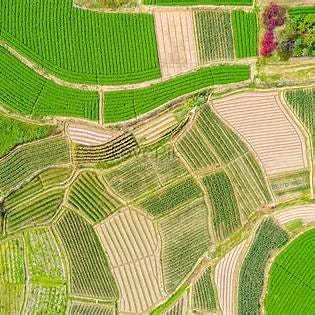Investing in Farmland in 2025: How Dirt Became a Top-Tier Asset Class
by Rafael Benavente
Investing in Farmland in 2025: How Dirt Became a Top-Tier Asset Class
In a world of market volatility, inflation, and growing concern over food security, farmland has become one of the most resilient and attractive investment classes. As of 2025, institutional and retail investors alike are turning to 'dirt' for long-term stability, passive income, and portfolio diversification. This blog explores why farmland is gaining attention, how to invest in it, the risks involved, and why it might be one of the smartest moves in your portfolio this decade.
1. Why Farmland?
Farmland offers a unique combination of benefits that make it an appealing asset:
- **Stable Returns**: Historically, U.S. farmland has delivered annual returns of 10–12% with low volatility.
- **Inflation Hedge**: Land and food prices tend to rise together, making farmland an effective store of value.
- **Non-Correlated Asset**: Unlike stocks and bonds, farmland prices are driven by local and global agricultural dynamics, not financial market sentiment.
- **Tangible Asset**: Farmland is real, productive, and often improves in value through good stewardship and capital upgrades.
2. What’s Driving the Boom in 2025?
In 2025, farmland is experiencing strong tailwinds:
- **Rising Global Food Demand**: A growing global population and shifting dietary habits are increasing the value of productive land.
- **Institutional Entry**: Pension funds, endowments, and sovereign wealth funds are allocating billions to agricultural land.
- **Tech-Enabled Access**: Platforms like AcreTrader and FarmTogether let individual investors buy fractional shares of farmland without managing it themselves.
- **Climate Resilience Focus**: Investors are eyeing land suitable for regenerative agriculture, carbon offset projects, or drought-resistant crops.
3. How to Invest in Farmland
There are multiple ways to gain exposure to farmland:
- **Direct Ownership**: Buy a farm through an LLC, lease it to a farmer, and collect rent.
- **REITs**: Publicly traded options like Farmland Partners (FPI) or Gladstone Land (LAND) offer liquidity and dividends.
- **Crowdfunding Platforms**: Platforms like AcreTrader and FarmTogether allow fractional ownership starting with as little as $10,000.
- **Private Funds**: High-net-worth investors may join private farmland funds offering diversified portfolios with professional management.
4. Returns and Risks
Farmland investments typically yield:
- **2–5% in annual cash returns** from lease income.
- **5–10% in annual appreciation**, depending on location and improvements.
However, risks include:
- **Weather and Climate Risks**: Droughts, floods, or changing growing seasons can impact yields.
- **Commodity Price Volatility**: Global price swings in corn, soy, or wheat affect farm profitability.
- **Regulatory Restrictions**: Foreign ownership rules vary by state and country.
- **Liquidity Constraints**: Farmland is not a quick-flip asset—it’s a long-term play.
5. Case Study: Fractional Farmland Success
AcreTrader offered a 231-acre Iowa corn and soybean farm in 2022. The investment required no active management from investors, who received rental income annually. By early 2025, the asset had appreciated 15% and generated total returns of over 7.3% annually, beating many REIT and bond benchmarks during the same period. This model—hands-off, professionally managed, and data-driven—is attracting a new class of passive investors.
6. The Future of Farmland as an Asset
Looking ahead, farmland is poised to grow as an institutional-grade asset. From carbon credits to vertical integration with food processors, land is becoming more financially productive. Investors are also exploring regenerative agriculture to boost land value and access carbon markets. With a finite supply of arable land and rising demand, farmland offers a powerful combination of income, capital appreciation, and impact investing.
Another example comes from a FarmTogether offering in California's Central Valley, where a specialty almond orchard generated both rental income and capital gains. Despite drought concerns, the investment was structured with water rights secured through a cooperative, showcasing how proper due diligence can mitigate key risks. Investors in that offering saw a 9% internal rate of return (IRR) over three years, highlighting the strong performance potential of well-managed specialty crop assets.
For investors seeking a defensive, income-generating asset that performs well in both inflationary and uncertain markets, farmland is a compelling option in 2025. It offers a unique mix of passive income, capital appreciation, inflation protection, and tangible value—all backed by an essential global need: food. As technology, climate change, and geopolitics reshape traditional investment strategies, farmland stands out as a timeless and future-proof choice. Whether accessed through direct ownership, REITs, or fractional platforms, farmland investing is no longer just for farmers—it’s a serious strategy for serious investors.
By Rafael Benavente

